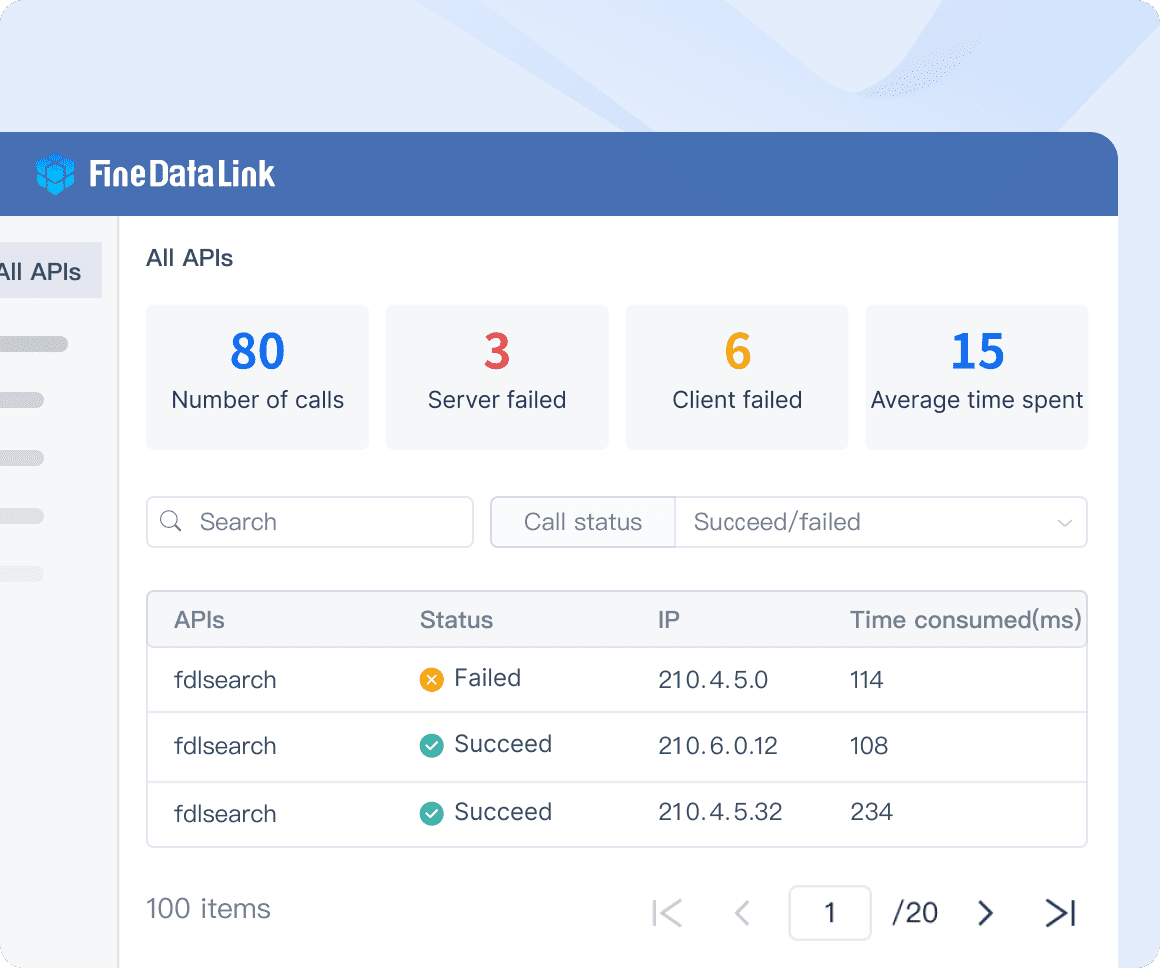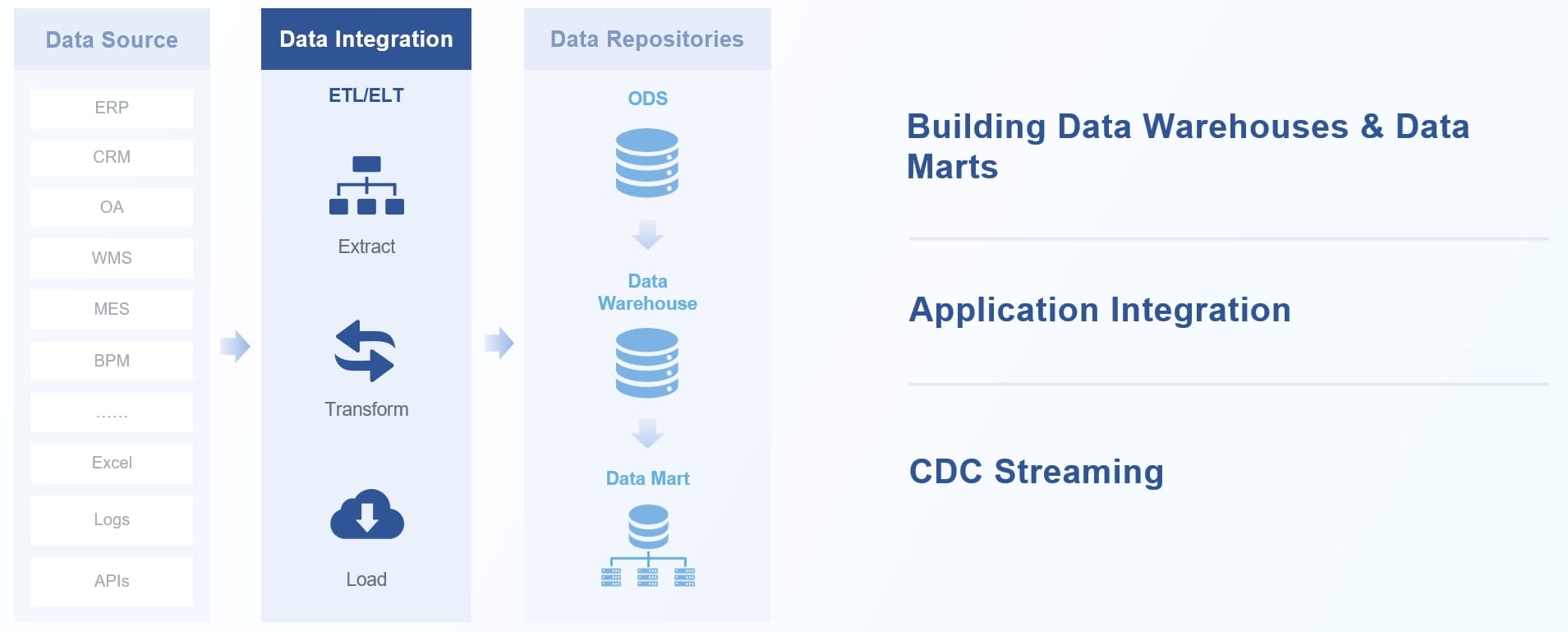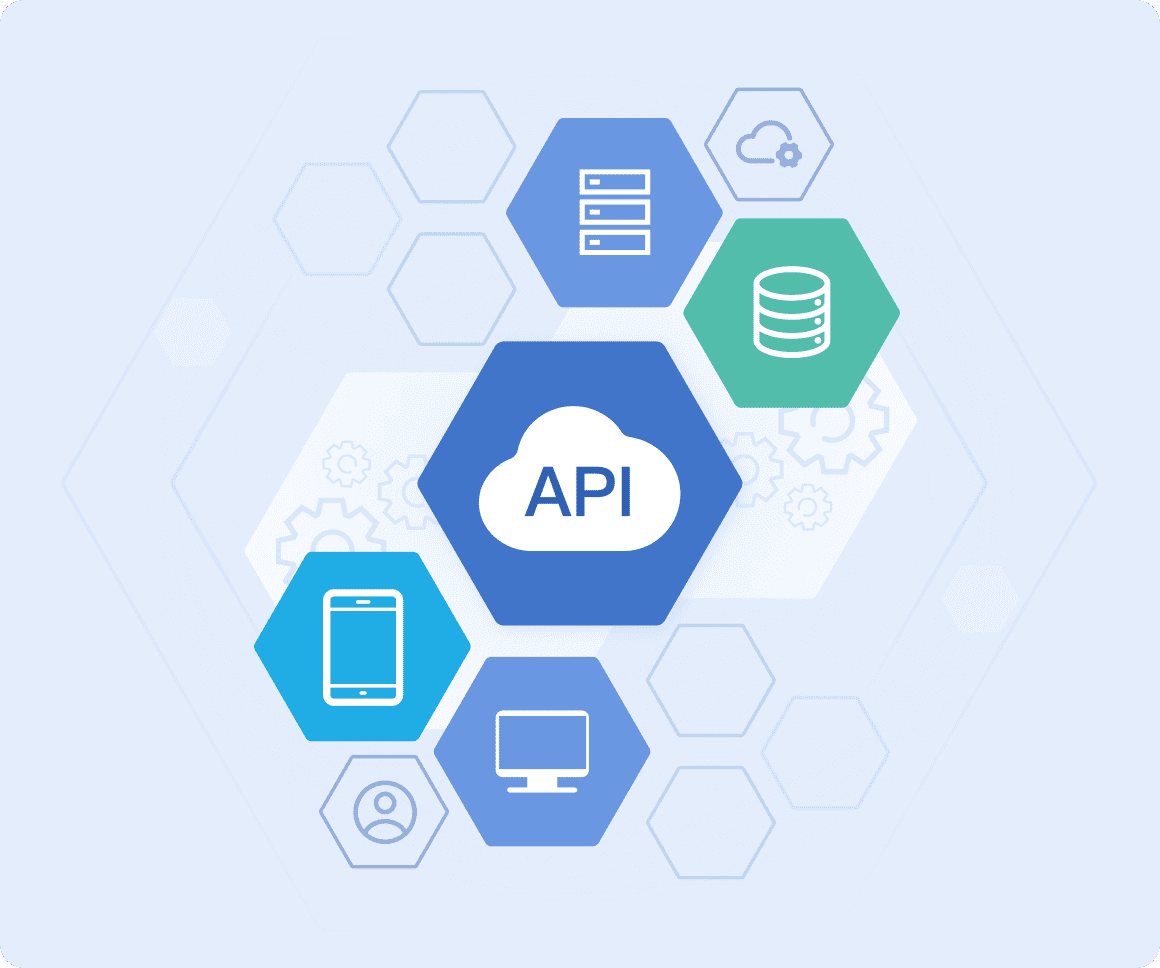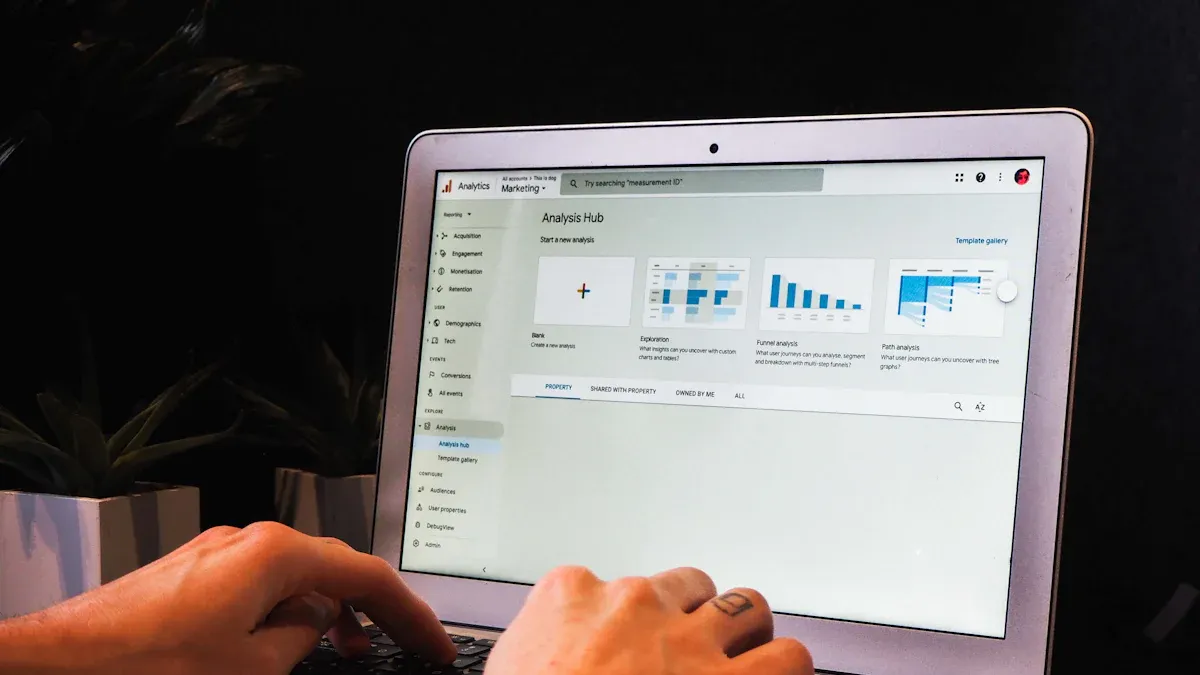An API, or application programming interface, lets two different applications talk to each other. You use APIs every day, often without even knowing it. When you order food at a restaurant, you tell the waiter what you want. The waiter takes your request to the kitchen and brings back your meal. APIs work just like that waiter. They carry your request from one application to another and return the response. APIs help software communicate and transfer data, making things like mobile payments and social media logins possible. In fact, over 62% of programmers now rely on APIs, and this number keeps growing.
![3[1].jpg](https://media.finebi.com/strapi/3_1_e301043481.jpg)
You see the term "application programming interface" often in technology. It may sound complex, but it describes a simple idea. An application is any software you use, like a weather app or a banking tool. A programming interface is a set of rules that lets one application connect with another. When you use your phone to check the weather, your weather app uses an API to get the latest data from a weather service. The API acts as a bridge, making sure your application can talk to other systems safely and quickly.
APIs have changed how you interact with technology. They help different applications work together, even if they were built by different companies. You can log in to a new website using your social media account because APIs allow secure sharing of your information. This process saves you time and keeps your data safe.
Tip: When you use an app that pulls information from another service, you are likely using an API—even if you do not see it working in the background.

An API is a set of rules and tools that lets one application communicate with another. You can think of it as a menu at a restaurant. The menu lists what you can order, but you do not see how the kitchen prepares your food. In the same way, an API tells your application what it can ask for and how to ask for it, but it hides the complex details behind the scenes.
APIs have evolved over time. Researchers have studied how APIs change and how these changes affect software. Here are some key findings from their work:
You can see the impact of APIs in many industries. Companies use APIs to speed up development, improve user experience, and save money. Hospitals use APIs to share patient data and improve care. Banks use APIs to make payments safer and faster. Here is a table that shows some real-world results:
| Sector/Company | Measurable Impact | Description |
|---|---|---|
| Tech Company | 30% reduction in time-to-market | Centralized API management platform streamlined development, accelerating feature delivery. |
| Tech Company | 20% increase in user satisfaction | Improved API monitoring and optimization enhanced user experience and satisfaction. |
| Tech Company | Significant operational cost savings | Optimized resource allocation and reduced inefficiencies lowered operational expenses. |
| Healthcare Hospital | 15% improvement in care coordination | API integration using FHIR standard enabled better patient data exchange and treatment. |
| Healthcare Hospital | Reduction in administrative burdens | Streamlined data sharing reduced paperwork and manual processes. |
| Financial Services | Enhanced transaction processing and security | APIs integrated with payment and fraud detection systems to improve reliability and compliance. |
APIs help you get new features faster, enjoy better apps, and trust that your information stays secure. Every time you use an application that connects to another service, you benefit from the power of APIs.
You interact with APIs every time you use an application that connects to another service. The process starts when you make an api request. Imagine you open a weather app and want to see today’s forecast. Your app sends a request to a weather service’s api endpoint. This endpoint is like a specific address where the weather data lives. The api call travels over the http protocol, which is the standard way computers talk on the web.
The api request contains details about what you want. The weather service receives your request, processes it, and sends back a response. This response usually comes in a format like JSON or XML. Your app reads the response and shows you the forecast. This whole process is called the request-response cycle.
You can think of the api as a waiter in a restaurant. You (the user) make a request by ordering food. The waiter (the api) takes your order to the kitchen (the server) and brings back your meal (the response). You never see the kitchen’s inner workings, just like you never see the code behind the api.
Most modern applications use rest apis. These apis use the http protocol to send and receive data. Each api call goes to a specific endpoint, which acts like a menu item. You can make many types of api requests, such as GET (to read data), POST (to add data), PUT (to update data), or DELETE (to remove data). Each type of request tells the api what action you want to perform.
Here is a simple step-by-step breakdown of how apis enable communication between software:
Tip: Every time you log in to a new app using your social media account, you are making an api call. The app sends an api request to the social media platform, which returns a response with your profile information.
Statistical studies show that following a clear process for api-based data synchronization leads to better results. Companies that use modern apis see a 25% increase in data synchronization efficiency and a 30% reduction in manual effort. You can see these improvements in the chart below:
![4[1].jpg](https://media.finebi.com/strapi/4_1_e91a45d23d.jpg)
You can use different synchronization methods with apis:
The interface of an api acts as a set of rules that tells your application how to communicate with another system. Each api has endpoints, which are specific paths or addresses where you send your api requests. The interface defines what data you can request, how you should format your request, and what kind of response you will get.
Most rest apis use the http protocol. You send api requests to endpoints using http methods like GET, POST, PUT, or DELETE. The api responds with data, status codes, or error messages. This structure makes it easy for developers to understand how apis work and to build reliable applications.
Here is a table that shows the main parts of an api interface:
| Part of API Interface | Description | Example |
|---|---|---|
| Endpoint | The address where you send your api request | /weather/today |
| HTTP Method | The action you want to perform | GET, POST, PUT, DELETE |
| Request Headers | Extra information sent with your api request | Authentication tokens, content-type |
| Request Body | Data you send with your api request | User details, search parameters |
| Response | The data or message you get back | Weather data, status code |
When you use rest apis, you often make multiple api calls to different endpoints. Each api call follows the same pattern: send a request, get a response. The http protocol ensures that your data travels safely and quickly between systems.
FanRuan and FineDataLink use apis to help organizations integrate and synchronize data in real time. FineDataLink lets you build an api interface in just a few minutes, even without writing code. You can connect over 100 data sources, automate data flows, and keep your business data up to date. The platform uses rest apis and the http protocol to make sure your api requests and responses move smoothly between systems. This approach reduces manual work, improves data quality, and helps your business make faster decisions.

Note: FineDataLink’s visual interface makes it easy to set up api endpoints and manage api calls. You can monitor your api requests, track responses, and ensure your data stays synchronized across all your applications.
You interact with APIs every day, often without realizing it. Many applications rely on APIs to handle your requests and deliver the right response. Here are some real-world examples of APIs that you probably use:
These real-world examples of apis show how APIs connect different applications and services. Each request you make triggers a process that brings back the information or service you need.
FineDataLink by FanRuan gives you a powerful way to connect your applications and share data across systems. You can build an API interface in minutes, even if you do not write code. FineDataLink supports over 100 data sources, so you can send a request from one application and get a response from another system quickly.

Here are some api examples of how FineDataLink helps you:
| Use Case | Request Example | Response Example |
|---|---|---|
| Real-Time Data Sync | Application A sends a request for new records | Application B sends updated data |
| Data Sharing | BI tool requests sales data from ERP system | ERP system returns sales data |
| Automated Reporting | Scheduler requests daily report data | System responds with report file |
You can automate your data flows and keep your applications up to date. FineDataLink makes it easy to manage each request and response, so your business runs smoothly. These real-world examples of apis highlight how FineDataLink streamlines integration and boosts efficiency.
Tip: FineDataLink’s visual interface lets you monitor every request and response, making data integration simple for all your applications.
When you explore the world of APIs, you find several types that serve different needs. Understanding the different types of apis helps you choose the right one for your project or business. Each type offers unique benefits and plays a key role in software development.
Open APIs, sometimes called public APIs, are available for anyone to use. You can access them without special permission. Many companies use open APIs to encourage innovation and speed up development. For example, you might use an open API to connect your app to a weather service or a map provider. Open APIs often use the http protocol, making them easy to integrate with web applications.
Private APIs work differently. Only people inside a company or organization can use them. You might use a private API to connect internal systems, such as linking your sales database to your reporting tools. Private APIs help keep sensitive data secure and support custom development within your business. Both open and private APIs rely on http to send and receive data.
You can measure the performance of open and private APIs using several important metrics. These metrics help you track the benefits and reliability of your API connections:
| Performance Metric | Description and Relevance to Usage Patterns in Business Environments |
|---|---|
| Availability / Uptime | Measures service reliability and user access continuity, critical for both open and private APIs to maintain trust and engagement. |
| Response Time / Latency | Indicates speed of API responses, affecting user satisfaction and system efficiency across API types. |
| Request Rate | Reflects load and usage patterns, helping identify peak times and user behavior for both open and private APIs. |
| Error Rate | Tracks frequency and severity of errors, providing insight into reliability and potential issues impacting API users. |
| CPU and Memory Usage | Shows resource utilization, helping optimize infrastructure supporting API performance regardless of API openness. |
| Unique User Count | Reveals user engagement and distinguishes between single-user vs multiple-user activity, important for usage analysis. |
| Cache Hit Rate | Assesses caching efficiency, impacting performance and cost optimization in API delivery. |
Note: Monitoring these metrics helps you improve the benefits of apis and ensures your systems run smoothly.
Partner APIs sit between open and private APIs. You share them with selected partners or clients, not with the public. You might use a partner API to let a trusted business access your inventory or order system. This type of API supports collaboration and helps you build strong business relationships.
You often use http to connect with partner APIs, just like with other types. Partner APIs offer many benefits. They help you control who accesses your data, support secure data sharing, and speed up joint development projects. You can use partner APIs to create new services, improve customer experiences, and unlock new business opportunities.
When you understand the different types of apis, you can make better choices for your development projects. Each type brings unique benefits, from open innovation to secure internal connections and trusted partnerships.
You need clear documentation to understand how APIs work. Good documentation acts like a map. It shows you where to start, what you can do, and how to avoid mistakes. When you try to connect different software, you often rely on api documentation to guide you. If the documentation is confusing or missing, you may waste time or make errors.
Many developers face problems when documentation is not clear. The table below shows how important documentation is for successful API integration:
| Statistic Description | Percentage |
|---|---|
| Developers citing inconsistent documentation as biggest roadblock to API integration | 39% |
| Developers relying on internal documentation for API integration | 58% |
| Developers relying on colleagues to explain APIs (causing delays) | 44% |
You can see that almost four out of ten developers struggle when documentation is not consistent. More than half depend on internal documentation to get their work done. If you want to avoid delays, you should always look for thorough api documentation before starting a project.
You can use api documentation to learn how to use an api, test requests, and solve problems. Most documentation gives you step-by-step guides, code samples, and explanations for each endpoint. This helps you understand what data you need to send and what you will get back.
When you use api documentation, you benefit from:
You should always check the documentation before you start building. This helps you avoid mistakes and saves time. If you use a platform like FineDataLink, you will find detailed documentation that explains every step. This makes it easier to connect your data and keep your systems running smoothly.
Tip: Always bookmark the api documentation for any service you use. This makes it easy to find answers and stay productive.
You see APIs at work every day, connecting applications and making your digital experiences seamless. APIs let your applications share data, automate tasks, and deliver new features quickly. Modern integration strategies rely on APIs to create secure, scalable, and innovative applications. Businesses now use APIs to improve decision-making, reduce costs, and boost productivity. FineDataLink helps you integrate applications and manage data in real time. As you use more applications, you benefit from faster onboarding, better fraud detection, and smarter data solutions. APIs will continue to shape the future of applications and business integration.
Click the banner below to experience FineDataLink for free and empower your enterprise to convert data into productivity!

작성자
Seongbin
FanRuan에서 재직하는 고급 데이터 분석가
관련 기사

옴니채널 개념 완벽 해설
옴니채널은 온라인과 오프라인 모든 접점에서 고객에게 일관된 경험을 제공하는 전략으로, 만족도와 매출 증대에 효과적입니다.
Seongbin
2025년 11월 25일

bi 시스템이란 무엇인가요?
bi 시스템은 기업 데이터 통합, 실시간 분석, 시각화를 통해 신속하고 정확한 의사결정을 지원하는 핵심 비즈니스 솔루션입니다.
Seongbin
2025년 10월 30일

비즈니스 인텔리전스 뜻, 데이터로 경쟁력을 만드는 실제 활용법
인텔리전스 뜻과 비즈니스 인텔리전스의 정의, 데이터를 활용해 기업 경쟁력을 높이는 실제 활용법을 명확하게 안내합니다.
seongbin
2025년 10월 17일